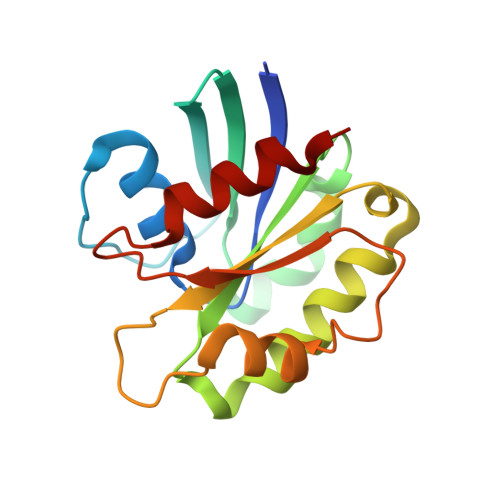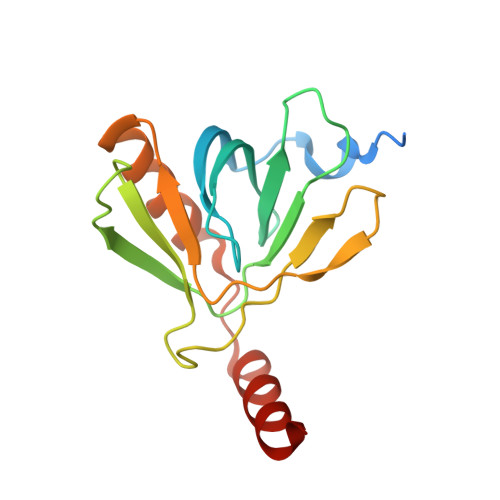Structural basis for membrane recruitment and allosteric activation of cytohesin family Arf GTPase exchange factors.
Malaby, A.W., van den Berg, B., Lambright, D.G.(2013) Proc Natl Acad Sci U S A 110: 14213-14218
- PubMed: 23940353
- DOI: https://doi.org/10.1073/pnas.1301883110
- Primary Citation of Related Structures:
4KAX - PubMed Abstract:
Membrane recruitment of cytohesin family Arf guanine nucleotide exchange factors depends on interactions with phosphoinositides and active Arf GTPases that, in turn, relieve autoinhibition of the catalytic Sec7 domain through an unknown structural mechanism. Here, we show that Arf6-GTP relieves autoinhibition by binding to an allosteric site that includes the autoinhibitory elements in addition to the PH domain. The crystal structure of a cytohesin-3 construct encompassing the allosteric site in complex with the head group of phosphatidyl inositol 3,4,5-trisphosphate and N-terminally truncated Arf6-GTP reveals a large conformational rearrangement, whereby autoinhibition can be relieved by competitive sequestration of the autoinhibitory elements in grooves at the Arf6/PH domain interface. Disposition of the known membrane targeting determinants on a common surface is compatible with multivalent membrane docking and subsequent activation of Arf substrates, suggesting a plausible model through which membrane recruitment and allosteric activation could be structurally integrated.
Organizational Affiliation:
Program in Molecular Medicine and Department of Biochemistry and Molecular Pharmacology, University of Massachusetts Medical School, Worcester, MA 01605, USA.





















